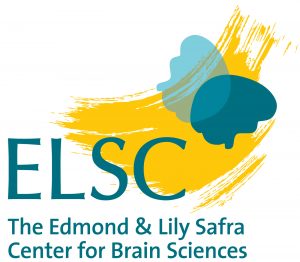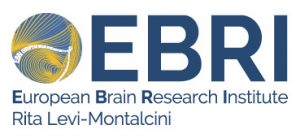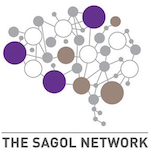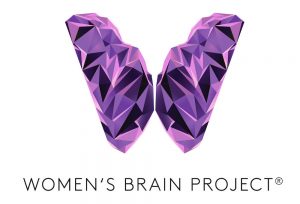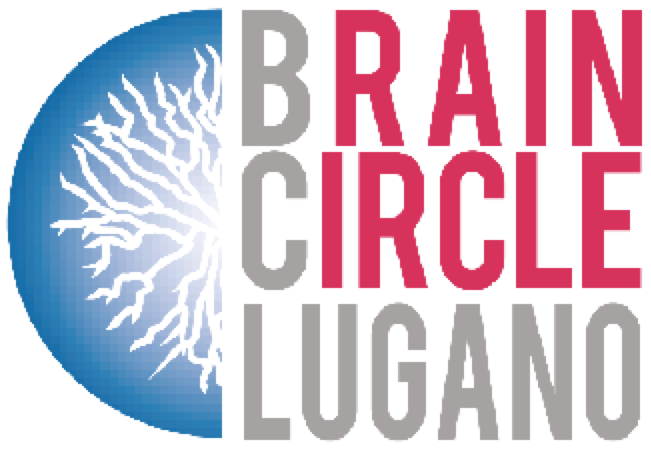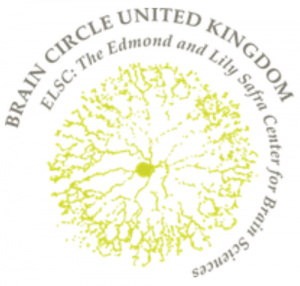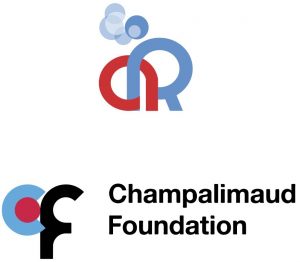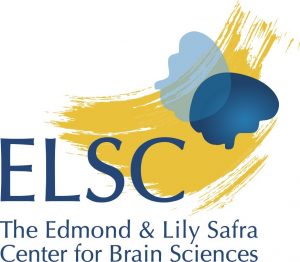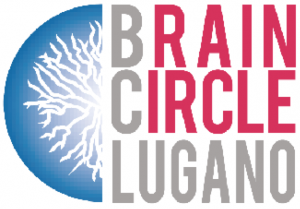Video Archive
The asset of vulnerability in leadership through the eyes of a transgender executive -Angela Matthes
Angela Matthes Former CEO of Baloise Life (Liechtenstein) AG The asset of vulnerability in leadership through the eyes of a transgender executive The speaker talks about her transition, the experience of vulnerability in her conversations and how vulnerability is an aspect of female leadership that is an important resource in a world of volatility, uncertainty, complexity, ambiguity. Creating an environment where everyone can be authentic will also become a high energy environment.
How emotions relate to disease: gender and sex in medicine - Antonella Santuccione Chada
Antonella Santuccione Chadha Women's Brain Project (WBP), Zürich How emotions relate to disease: gender and sex in medicine The paper provides an excursus on the growing interest in the study of sexual and gender characteristics in medicine and healthcare. Moving from a Caucasian male-centric approach, the field is moving towards a more inclusive one, based on the recognition that diseases can differ between males and females in different domains: epidemiology, clinical manifestations, disease progression, prognosis, response to treatment. and care among others.
Beauty and the brain: a view from the body - Beatrice de Gelder
Beatrice de Gelder Maastricht University Beauty and the brain: a view from the body The human body is omnipresent in Western art. Over the centuries, art theorists and philosophers have offered various explanations to explain how and why representations of the human body affect the viewer. Studies on the representation of the body and its emotional expressions in the brain are relatively recent. This intervention shows how contributions from brain studies can improve understanding of the perception of the human body and its role in the arts.
New York University Center for Neural Science - Cristina Alberini
Cristina Alberini New York University Center for Neural Science How emotions shape memories Emotions have a significant influence on cognitive processes, including perception, attention, learning, memory, reasoning and problem solving. We will see how emotions regulate long-term memory processes and the underlying biology, for example, we remember more and better life events that formed under strong emotions. Emotions also affect memory storage and retrieval, as well as subsequent updating and behaviors.
When love turns sour - Donatella Marazziti
Donatella Marazziti Psychiatrist at the University of Pisa, Saint Camillus - Unicamillus University Roma and BrF, Lucca When love turns sour Love can be troublesome. When love is there it is a source of great joy, but sometimes it makes us suffer and can lead to harassing behaviors such as emotional dependence, jealousy, the inability to accept the end of it with stalking. We must learn to love in the right ways.
Behind beauty: choise in biological and cultural evolution - Eva Jablonka
Eva Jablonka Sagol School of Neuroscience, Tel Aviv and Social Science London School of Economics, London University Behind beauty: choise in biological and cultural evolution Our assessment of beauty in art and science is based on cultural prejudices and constructions. It is argued that discrimination between complex patterns often perceived as beautiful is one of the hallmarks of consciousness and its evolution has been shaped by social and sexual choices. However, human art and science are predominantly shaped by historical processes.
Social emotions: is empathy a gender issue? - Giorgia Silani
Giorgia Silani Universität Wien Social emotions: is empathy a gender issue? Empathy, the ability to understand and share another person's feelings is a crucial element for the success of social interactions and well-being. Social neuroscience has begun to shed light on the neural mechanisms underlying the brain's empathic responses. An overview of the state of the art of empathy brain research is offered, focusing on two questions: 1) What are the behavioral and neural mechanisms underlying empathic responses? 2) Does gender affect our ability to empathize with other people?
Art as a trigger of emotions in Marcel Proust’s Recherche - Hanna Monyer
Hannah Monyer EBRI & University Hospital and German Cancer Research Center, Heidelberg Art as a trigger of emotions in Marcel Proust’s Recherche The talk addresses the issue of the bidirectional interaction between memory and emotions, comparing experimental data from neuroscience and passages from the “Recherche” to illustrate how memories are generated, consolidated and recalled. With the meticulousness and precision of a scientist, Proust with his text offers a splendid example of how memories and emotions modulate each other in a bidirectional way.
L’arte come detonatore di emozioni nella Recherche di Proust - Hanna Monyer
Il talk affronta il tema dell'interazione bidirezionale tra memoria ed emozioni, confrontando dati sperimentali provenienti dalle neuroscienze e brani della “Recherche” per illustrare come si generano, si consolidano e si richiamano i ricordi. Con la meticolosità e la precisione di uno scienziato, Proust con il suo testo offre uno splendido esempio di come ricordi ed emozioni si modulano a vicenda in modo bidirezionale.
Repressed emotions and PTSD - Hermona Soreq
Hermona Soreq The edmond and Lily Safra Center for Brain Sciences, the Hebrew University of Jerusalem Repressed emotions and PTSD Repressed emotions have great power and can accelerate the anxiety-inflammation circuit and we are subjected to continuous stress. Understanding the mechanisms of these processes can help us manage PTSD.
Helping others in distress: neural networks involved in empathy - Inbal Ben Ami
Inbal Ben Ami Sagol School of Neuroscience, Tel Aviv University Helping others in distress: neural networks involved in empathy What are the neural underpinnings of vicarious pain/distress processing and how this can lead to pro-social behavior. Common evolutionary roots with other mammals and research on rats are presented.
Emotions in the art of mnemonics - Lina Bolzoni
Lina Bolzoni Scuola Normale Superiore Pisa, Accademia dei Lincei Emotions in the art of mnemonics Emotions play an essential role in the tradition of the art of memory. It is a question of fixing in the mind an ordered path of places, of associating images to each of them which will then allow to return the memories that have been entrusted to them. The images must be imagines agentes, that is, images capable of acting on emotions, for example on eros, fear or horror. We will show some examples of how all this works, from Quintilian's rhetoric to Dante's Comedy, to Giordano Bruno's magic.
Emotions: a tool box - Maya Tamir
Maya Tamir Department of Psychology, the Hebrew University of Jerusalem Emotions: a tool box Emotions are tools that guide us in the right directions, but they don't determine our actions. Emotions are complex information and are one of the many signals we have: we can manage them to feel better, act better, be better. Emozioni: una cassetta degli strumenti Le emozioni sono strumenti che ci guidano nelle giuste direzioni, ma non determinano le nostre azioni. Le emozioni sono informazioni complesse e sono uno tra i molti segnali che abbiamo: possiamo gestirle per sentirci meglio, agire meglio, essere migliori.
The rewarding effect of beauty in the brain - Merav Ahissar
Merav Ahissar ELSC Center for Brain Research, the Hebrew University of Jerusalem The rewarding effect of beauty in the brain Is there a specific “beauty” region in the brain? And if so – what triggers it - innate golden ratios, or cultural nurturing, experience-based characteristics? Is extreme beauty (sublime) equivalent to greater beauty or does it yield other types of responses? I will discuss these issues based on recent behavioral and brain studies.
Emotions, between biases and paradoxes: a neuroscientific perspective - Michela Balconi
Micaela Balconi International Research Center for Cognitive Applied Neuroscience (IRCCAN), Università Cattolica Milano and Brescia Emotions, between biases and paradoxes: a neuroscientific perspective Emotions pervade every aspect of our existence. An essential starting point when studying emotions is that emotion is an experience even before a process, an experience that finds some unique specificities in the "gender" differences; an experience in which we are involved throughout the entire course of our life. The goal is therefore to understand emotional experience from a neuroscientific perspective, which highlights the role of the physiological systems involved in the variegated universe of emotions.
How to reduce fear by social support - Mouna Maroun
Mouna Maroun Sagol Center, Haifa University How to reduce fear by social support Once fear memory is formed, its reduction is a slow process that can be best achieved by extinction training. The adult animals that form fear memories can extinguish these memories faster in pairs (social condition) and this acceleration of fear is dependent on prefrontal oxytocin.
Do men and women have different brains? - Pamela Agazzi
Pamela Agazzi Neurocenter of Southern Switzerland, EOC Lugano Do men and women have different brains? Are male and female brains different? The notions we have about these differences are based on studies that are criticized for their limitations and difficulties of interpretation. Indeed, the complexity of gender identity arises from the interplay between different aspects, including anatomy, genetics, psychology and behavior.
We learn love from our parents - Ruth Feldman
Ruth Feldman Director, Center for Developmental Social Neuroscience, Interdiscilinary Center (idc), Herzlya, Israel and Yale University, Child Study Center We learn love from our parents For centuries, love has been celebrated by poets, artists, writers and musicians, and only recently have neuroscientists begun to explore the biological basis of the human capacity to love. Here a conceptual model on the neurobiology of love is presented and its three principles are highlighted: The oxytocin system, the affiliated brain and biobehavioral synchrony. The intervention concludes by describing several interventions that aim to help parents and children to provide an optimal context for the flowering of love.
Growing a social brain - Shir Atzil
Shir Atzil Department of Psychology, the Hebrew University of Jerusalem Growing a social brain As adults, we have structured conceptual representations of our emotions that help us to make sense of and regulate our affective experience. The ability to use this emotion concepts is critical to make predictions about the world and choose appropriate actions. Infants can learn this emotion concepts for the maintain the physiological balance, or allostasis.
Emotions: from safety to selfie - Talma Hendler
Talma Hendler Sagol School of Neuroscience, Tel Aviv University Emotions: from safety to selfie Emotions are the building blocks of our mental health. But what are emotions and how to identify the mechanisms in the brain of human emotions? And how can we measure these processes?
Musical groove: the intersection of pleasure and movement - Virginia Penhune
Virginia Penhune Concordia University and McGill University, Montreal Musical groove: the intersection of pleasure and movement Music is a complex auditory communication system found in all human societies. Most people spontaneously move to the beat of the music, and musicians balance predictability and surprise. These phenomena suggest a strong interaction between the auditory and motor systems of the brain, as well as with the networks involved in musical reward.
Neuroscientific methods for designing more social robots - Agnieszka Wykowska
When we predict and explain the behavior of other human beings, we often adopt an intentional attitude, that is, we refer to the mental states of other human beings (beliefs, desires) to understand their actions. It is not yet clear if and when this same attitude is adopted towards artificial entities, such as humanoid robots. The speech will offer an overview of the studies conducted in order to answer this question.
Mutual understanding between humans and robots - Alessandra Sciutti
We often ask ourselves how we, human beings, will have to adapt to live in an increasingly technological world. In reality it is the machines that should learn to adapt to us, to see the world through our eyes. Research in the field of cognitive robotics aims to discover how to teach a robot to anticipate our desires and understand our emotions, to perceive the world in a more human way.
Non human robots: a different kind of intelligence - Barbara Mazzolai
Perfection is not nature's goal. Living organisms are adaptive, they constantly learn and evolve and these life and evolution strategies of natural organisms can provide engineers who study robots with the rules to design and develop new embodiments, adaptive behaviors and new production processes that can allow artificial machines to adapt to unstructured and even dangerous environments.
Cyborg and magical thinking - Daniela Cerqui Ducret
Before even talking about how to develop the human-machine interface, from an anthropological point of view, we should ask ourselves why to do it. There is a tendency to take for granted an interchangeability between living and non-living elements; robots are becoming social partners of humans and artificial prostheses are thought to replace human functions without problems. However, this interchangeability is the result of a "magical thought" inherited from cybernetics.
A new approach to emotions: virtual embodiment - Mavi Sanchez Vives
Embodiment is essential for self-perception. Whenever in life we have lowered our eyes to look at our body, we have seen it as our interface for perceiving and acting in the world. In an immersive virtual world we can successfully generate the illusion of embodiment of a virtual body. Several studies show the impact that our embodied virtual body has on physiology, emotions, cognition and human behavior. An impact that can become a therapeutic tool in medicine and psychotherapy.
Algorithms to detect hateful messages and emotions on social media - Sara Tonelli
Deep learning-based algorithms are able to recognize hateful content in social media messages and capture the emotions expressed by online users. But how do they work in practice, and what are the risks associated with their application in real-world scenarios? Recent work in linguistics, cognitive science and ethics has shown that artificial intelligence (AI) systems can harm minorities in a number of ways, for example by demonstrating disparity in performance across demographic groups.
Self-control, emotions and morality - Elisabetta Sirgiovanni
Elisabetta Sirgiovanni Department of Molecular Medicine, Museum of the History of Medicine, Sapienza University, Rome Self-control, emotions and morality Traditionally self-control has been characterized by what we can call three myths, three (false) ideas inherited from a Victorian conception of mind/brain: that self-control is rational, conscious and moral (identifying 'moral' with precise forms of morality). These ideas have also influenced contemporary neuroscientific studies. More recently, the literature in cognitive neuroscience is converging towards a more integrative view, giving greater role to emotional regulation and discrediting the concept of willpower. Autocontrollo, emozioni e giudizi morali Tradizionalmente l’auto-controllo è stato caratterizzato da quelli che possiamo chiamare tre miti, tre (false) idee ereditate da una concezione vittoriana su mente/cervello: che l’auto-controllo è razionale, cosciente e morale (identificando ‘morale’ con precise forme di moralità). Queste idee hanno influenzato anche gli studi neuroscientifici contemporanei. Più recentemente, la letteratura nelle neuroscienze cognitive sta convergendo verso una visione più integrativa, conferendo maggior ruolo alla regolazione emotiva e screditando il concetto di forza di volontà.
Loss and economic decisions: insights from a neuroscience of emotions - Elizabeth A Phelps
Elizabeth Phelps Pershing Square Professor of Human Neuroscience, Harvard University, US Loss and economic decisions: insights from a neuroscience of emotions The relative value assigned to losses and gains can adversely affect a range of financial decisions, from auction bids to stock trading. The speaker describes how the brain systems underlying our response to threats mediate loss aversion and show how changing these emotional responses can change our choices. Perdita e decisioni economiche: la prospettiva delle neuroscienze delle emozioni Il valore relativo assegnato alle perdite e ai guadagni può influire negativamente su una serie di decisioni finanziarie, dalle offerte all'asta alle negoziazioni di azioni. La speaker descrive come i sistemi cerebrali alla base della nostra risposta alle minacce mediano l'avversione alla perdita e mostra come il cambiamento di queste risposte emotive può cambiare le nostre scelte.
Neural control of social interactions -
Catherine Dulac Higgins Professor of Molecular and Cellular Biology, Harvard University Neural control of social interactions She describes his recent work discovering specific neuronal populations in the brain that participate in the positive and negative regulation of parental care in both males and females. Il controllo neurale delle interazioni sociali Descrive il suo recente lavoro alla scoperta di specifiche popolazioni neuronali nel cervello che partecipano alla regolazione positiva e negativa della cura dei genitori sia nei maschi che nelle femmine.
Lust, romance, attachment: the nature of love - Helen Fisher
Helen Fisher Senior Research Fellow at The Kinsey Institute, Indiana University Lust, romance, attachment: the nature of love Shi discusses three brain systems that have evolved for mating and reproduction: sexual desire, romantic love, attachment to the partner. She focuses on her brain-scanning research on romantic passion, rejection in love, love addiction, and long-term happiness. Desiderio, amore, attaccamento: la natura dell’amore Discute tre sistemi cerebrali che si sono evoluti per l'accoppiamento e la riproduzione: desiderio sessuale, amore romantico, attaccamento al partner. Si concentra sulla sua ricerca di scansione cerebrale sulla passione romantica, il rifiuto nell'amore, la dipendenza dall'amore e la felicità a lungo termine.
Fear: the fundamental emotion - Marta Moita
Marta Moita Principal investigator to moitalab at Champalimaud Foundation, Lisbon Fear: the fundamental emotion Fear is crucial for the survival of all species and is an inner state triggered by external events that increases with the intensity of the event. The experimentation has also shown that the condition of fear survives the event and depends on the context. It is therefore a cycle (object-emotion-response-emotion-response-object), capable of changing the very nature of the threat. Paura: l’emozione fondamentale La paura è cruciale per la sopravvivenza di tutte le specie ed è uno stato interiore innescato da eventi esterni che aumenta con l'intensità dell’evento. La sperimentazione ha dimostrato anche che la condizione di paura sopravvive all’evento e dipende dal contesto. Si tratta quindi di un ciclo (oggetto-emozione-risposta-emozione-risposta-oggetto), in grado di cambiare la stessa natura della minaccia.
The intersetion between emotions and memory - Elizabeth Phelps
Elizabeth Phelps Pershing Square Professor of Human Neuroscience, Harvard University The intersetion between emotions and memory Memory is not a picture, a replica of what we have in front of us, it is a process, a dynamic interpretation, which changes over time, and differs in confidence and accuracy. Emotions modify the memory process in its three phases: encoding, maintenance and retrieval. Le intersezioni tra emozioni e memoria La memoria non è una fotografia, una replica di quello che abbiamo davanti, è un processo, un’interpretazione dinamica, che cambia nel tempo, e differisce in affidabilità e precisione. Le emozioni modificano il processo della memoria nelle sue tre fasi: codifica, mantenimento e recupero.
The empathic brain - Valeria Gazzola
Valeria Gazzola Department head Netherlands Institute for Neuroscience, Amsterdam The empathic brain We are trying to understand the brain mechanisms that allow us to perceive and share the actions, sensations and emotions of other individuals. And does this ability to share other people's emotions affect how we interact with them? Finally, is this ability to share the emotions of others unique to humans or common to other species?
The co-evolution of emotions and language - Eva Jablonka
Eva Jablonka Professor, Sagol School of Neuroscience ,Tel-Aviv; London School of Economics, London University The co-evolution of emotions and language There is very little discussion of the relationship between the evolution of language and emotions, but today we think that language is a suite of human cognitive abilities and has co-evolved at the same time as other human capabilities. The evolution of language depends on emotional preconditions and as language has evolved it has changed the emotional profile of human beings.
Promoted by
.
.
.
In collaboration with
.
.
.
.
With the generous contribution of
.
Institutional relations
Organisation
Press office
With the support of
.
.
Digital services
We thanks







































